Zielona Góra
The largest of the Lubusz province’s two capital cities and the “western gate” to Poland, this charming city stands proudly on seven hills between the rivers Oder and Bóbr, and has plenty to delight even the most demanding of tourists…
A City with Wine in its Veins
Before there was even a city, there were vines where Zielona Góra now stands. After a period of inactivity, the city’s old winemaking tradition is steadily reviving, and there’s even a song inviting tourists “to rendezvous with Bacchus” here. It is said that, after Bacchus was torn to pieces by the Titans, Pallas Athena sprinkled his blood along the Mediterranean coast in France, lands on the Reine and the Moselle. Vineyards sprang from every droplet, marking the beginnings of famous winemaking regions. A tiny amount of the blood also fell, it is said, on the soil around Zielona Góra…This is the legend told at the Lubuskie Regional Museum, one of many unmissable stops on your way to discover Zielona Góra.
A Glass of History
Zielona Góra and wine are so tightly interlinked, they are almost synonymous. The town received its charter in the 14th Century, but its hills were covered with vines long before then. And despite many challenges, which included locusts, smallpox and several changes in power, from the Piasts of Głogów, through to the Jagiellons, Habsburgs, the Kings of Prussia, Germany, and finally back to Poland in 1945 – somehow, through all this, nothing managed to disturb the developing wine business. In fact, it was in Zielona Góra in 1826 that the production of Germany’s first sparkling grape wine was launched, by a brave, innovative company owned by Friedrich August Grempler. Fast forward 100 years, with six other wine businesses also operating in the city, this company was making 250,000 bottles a year, a figure that had risen to 800,000 just before war broke out. The indestructible wine stocks also survived the World War, enabling the Lubusz State Wine Production Enterprise to continue making wine. When the political system changed and the facility was shut down in 1999, its buildings began to fall apart, and it looked like the centuries-old winemaking tradition was on course to disappear. But no. Thankfully, a few years ago it began its revival. Points of interest linked to winemaking are a must when visiting the city, although they are far from being the only attractions here.
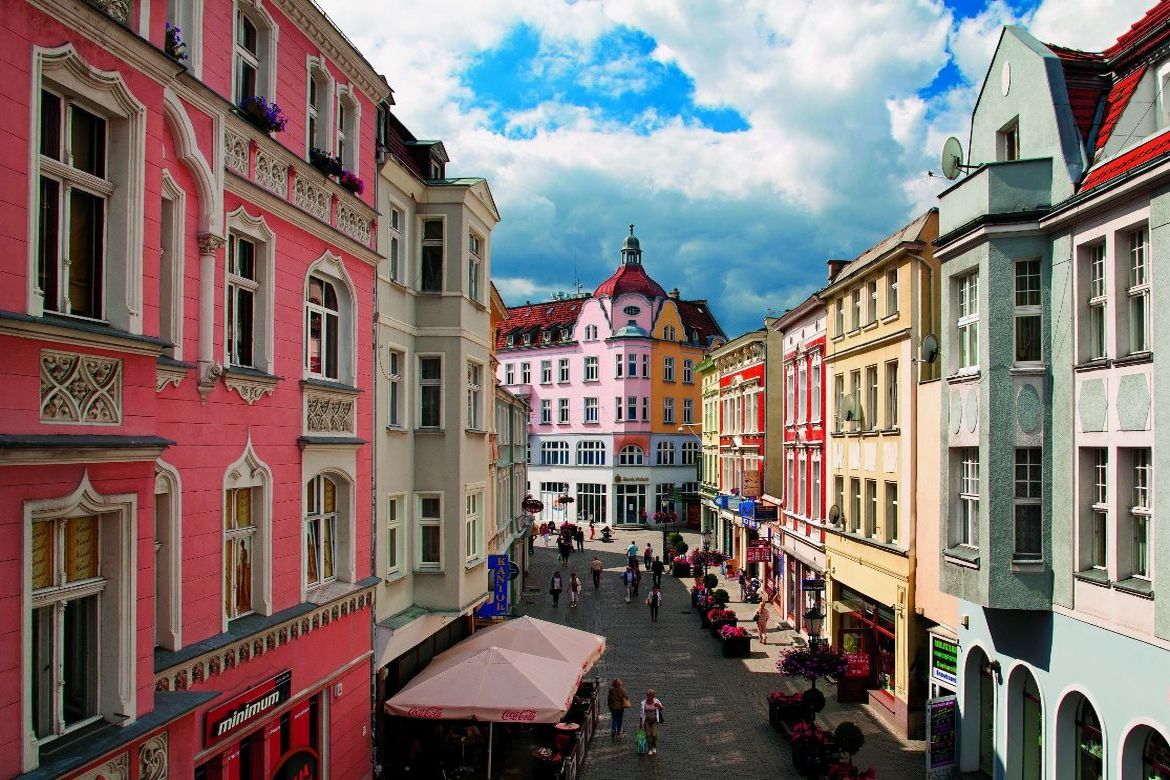
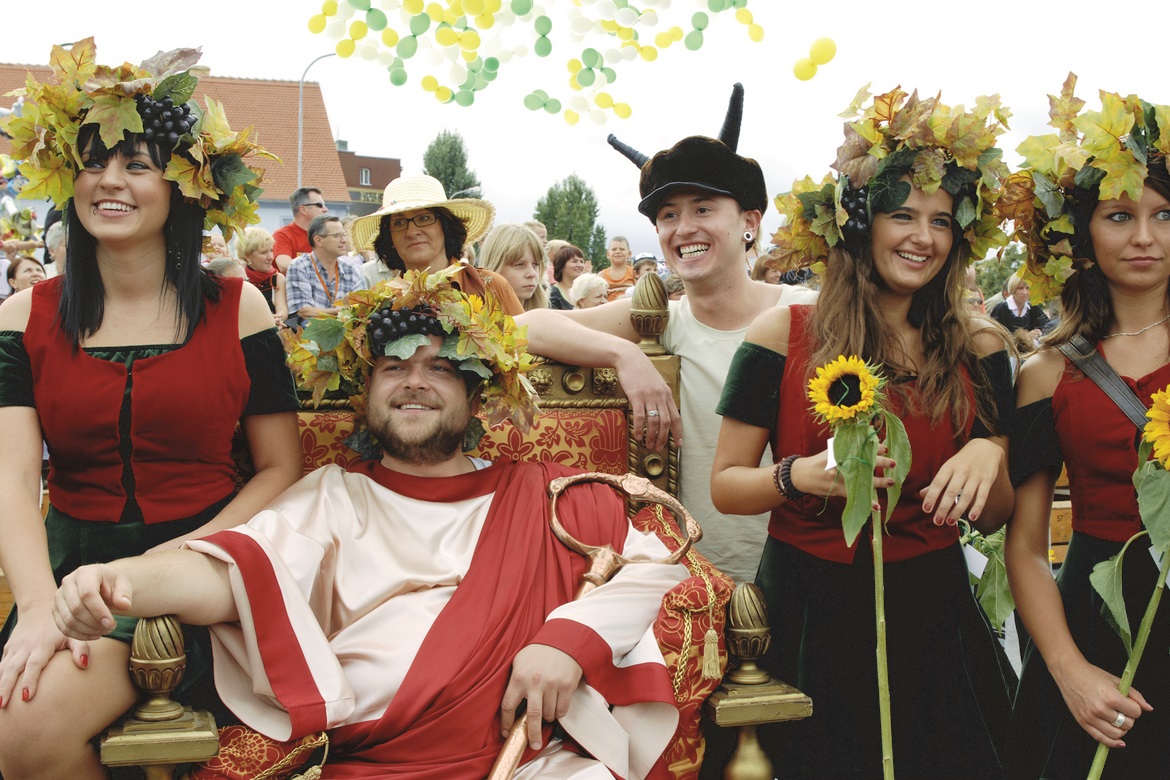
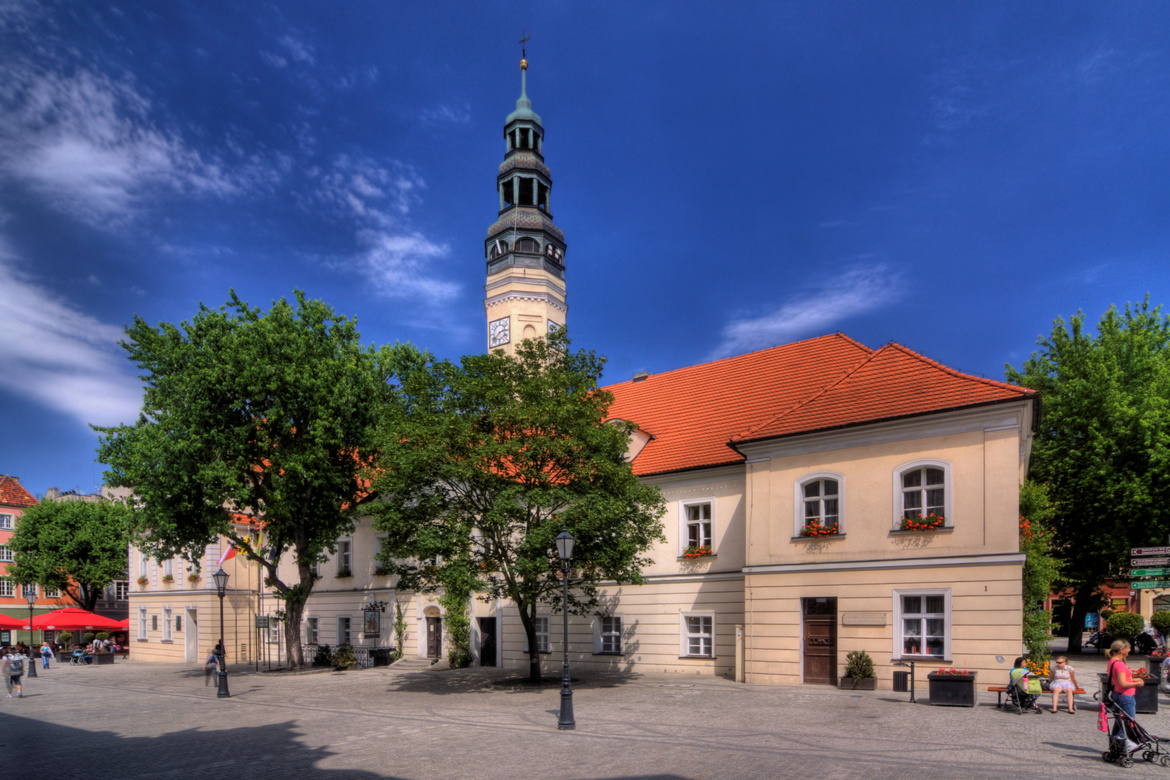
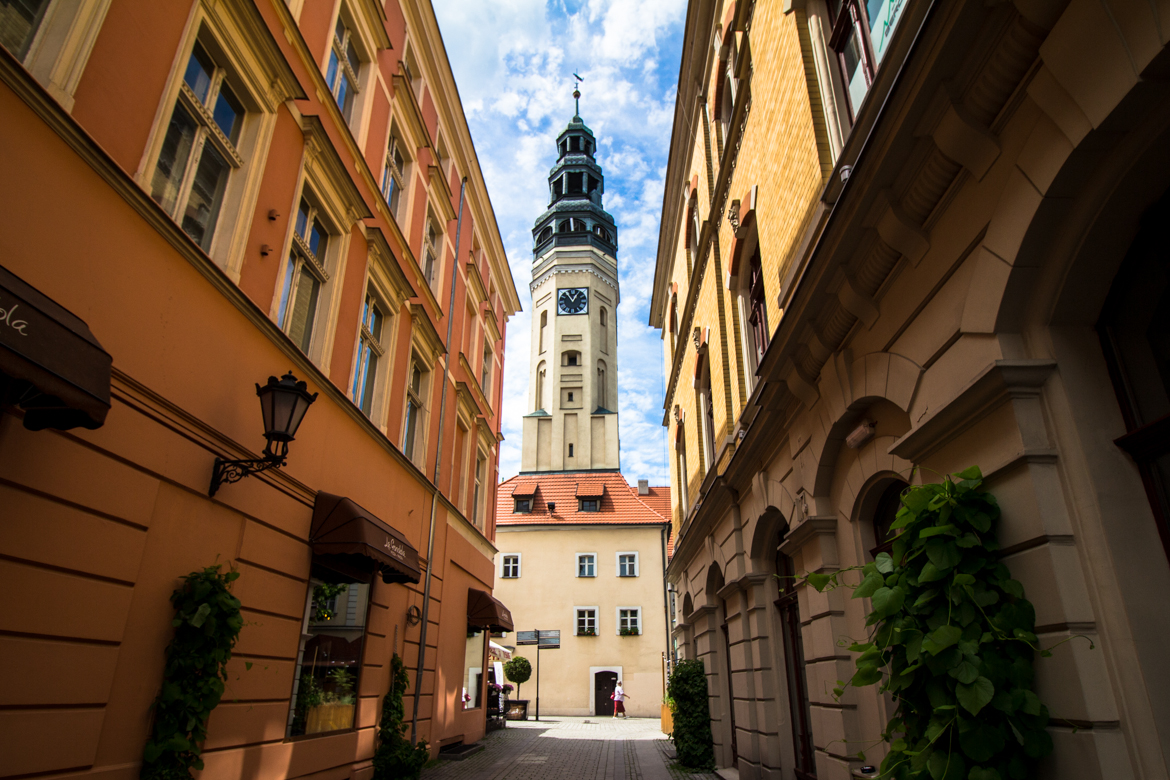
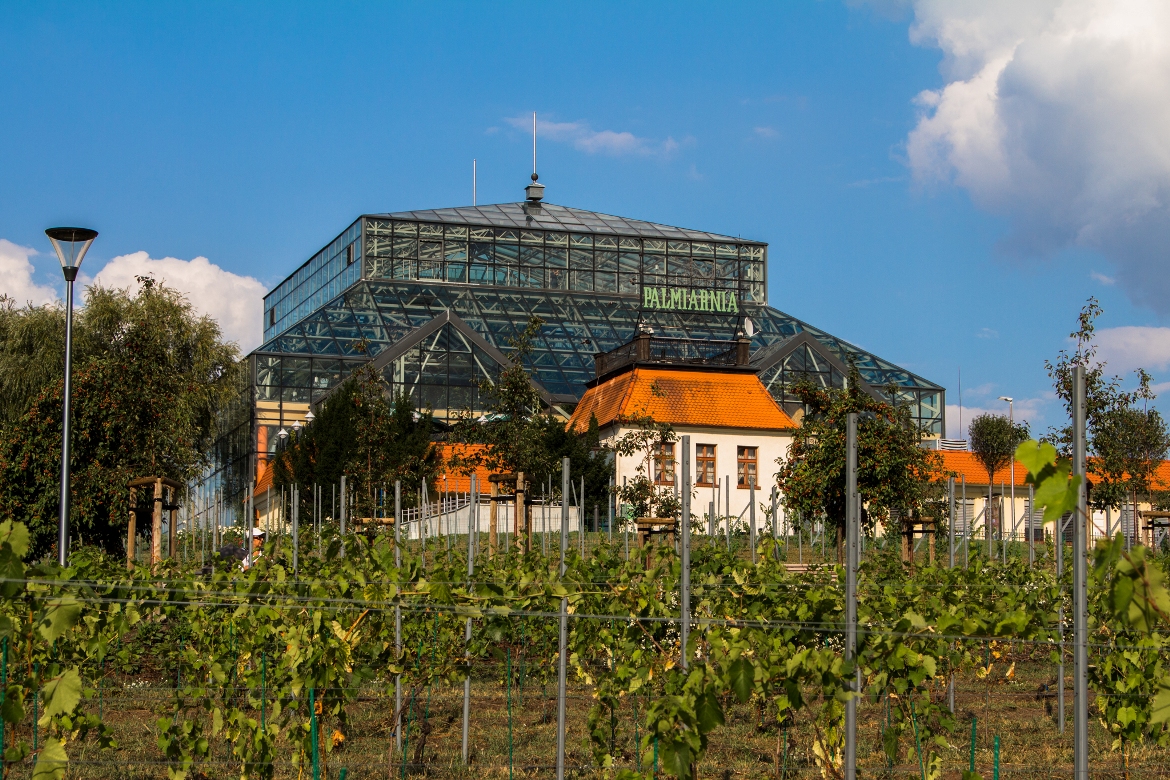
First Stop: Cheers!
Enjoy a nice glass of red, white or rosé? You’re in luck. The Wine Museum (yes, a museum dedicated to wine) has 1,540 exhibits telling the story of winemaking in the region from its beginnings to the present day. A series of paintings by Jerzy Fedro also depict winemaking stories; especially humorous is the one about stag parties in the olden days lasting a fortnight, after which the groom was so drunk, he could barely stand up straight at the altar.
The eye-catching Palm House is also definitely worth visiting. Its huge modern glass structure merges with the historical and palatial winemaking Grempler building, built here in 1818. The historical vineyard in front of the Palm House is a symbolic reference to the times when plantations covered all the surrounding hillsides. True to its name, the greenhouse boasts towering palm trees and a host of other tropical plants. Enjoy a delicious restaurant meal in unique surroundings, and don’t leave without really taking in the incredible views of the cityscape from the upper terrace. There’s no better place to appreciate it.
And, since you’re on Wine Hill already, be sure to visit the Wine Cellar there and try some of Zielona Góra’s wine. It would be silly not do, wouldn’t it?
Enjoy a Mini-Bacchus Trail
Just like Wrocław has its famous little dwarves, Zielona Góra now boasts its own mini-Bacchus gnomes, called Bachusiki. More than 50 of these figurines, each with a funny name, can be found along the Bacchus Trail. You’ll find the greatest number of them along the main promenade, one of the longest in the country, which is packed with cafés, restaurants and pubs – many of them in former wine cellars.
The Old Market Square is the beating the heart of the Old Town, and features the city’s most historic building – the Gothic Cathedral of St. Hedwig of Silesia, as well as the Bath Tower, the Town Hall and even remaining fragments of the ancient town walls. While its exterior already brings a refreshing part from more typical-looking religious buildings, it’s the interior of the Church of Our Lady of Częstochowa that will really surprise you: rather unusually for a church, the white balconies in three tiers look much more like a theatre – which is fitting really because the exterior is very reminiscent of the Shakespeare’s Globe Theatre. The Old Market Square plays host to several regular events, including Summer of All Muses and the famous Wine Festival.
Planetarium and Torture
The Venus Planetarium presents the first Polish animation in 3D technology, On the Wings of Dreams, about the history of aviation, as well as many other immersive film shows. It’s actually one of only three planetariums in the world with a movable dome, whose angle can be changed during projections giving audiences a unique experience. The Planetarium and the Nature Centre together form the Kepler Science Centre. Considered the first astrophysicist in history, Johannes Kepler was a great 17th-Century mathematician who discovered three principles governing the movement of planets in the Solar System (these are Kepler’s three laws of planetary motion) as well as introducing the decimal point. That’s quite the CV!
If you embark on the tourist trail, you’ll also find the Torture Museum; a permanent gallery belonging to the Lubuskie Regional Museum. Set up in the gloomy cellars of the museum, the exhibition suggestively recounts the history of criminal law, how punishments were enforced and what methods of torture were used in medieval times and the modern era (none of them are nice). Check out tools from the times of witch trials while listening to the eerie soundtrack of jangling chains and the moans of the tortured.
And then, move on to something much less gruesome, like enjoying a concert at the Zielona Góra Philharmonic, or if you feel like recharging, head to the Sports and Recreation Centre and try their aquapark.
Speed Demons and Thrill Seekers, Take Note
If you’re something of a sports fan, you have chosen the right city: an ultramarathon along the new city boundary, the Grand Prix Kaczmarek Electric MTB races, the Dirty Dozen cross-country race, the Wine Harvest Nordic Walking March, the Battle of Europe and the Zielona Góra Grand Prix in long-distance running are just a few of the many sporting events held here throughout the year.
Get your adrenaline pumping with a visit to the Falubaz stadium – the champion speedway racing club – as the motorbikes race past at 100 km/h, with no brakes! Another way to take home some unforgettable sports memories is by watching the basketball players of Stelmet Enea BC, four times Polish champions.
Those who enjoy an active lifestyle are spoilt for choice here really, including Nordic walking routes, bike paths and boat trips on the Oder. If you plan to stay longer, it’s worth hiring one of the 400 municipal rental bikes and setting out along one of the cycle paths, which will lead you to the Ethnographic Museum in Ochla, the palace and park in the Zatonie district, or the incredible Botanical Garden and the old Oder riverbed in Odrzański Forest. Happy cycling!

